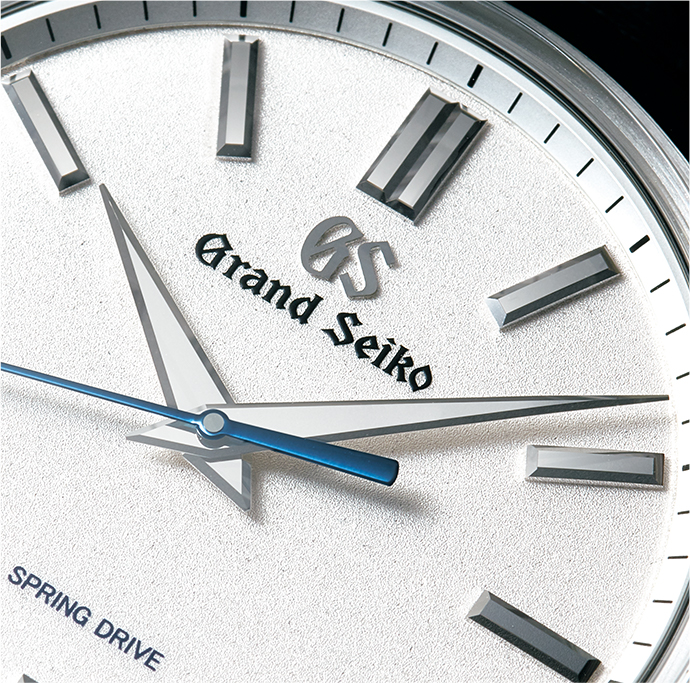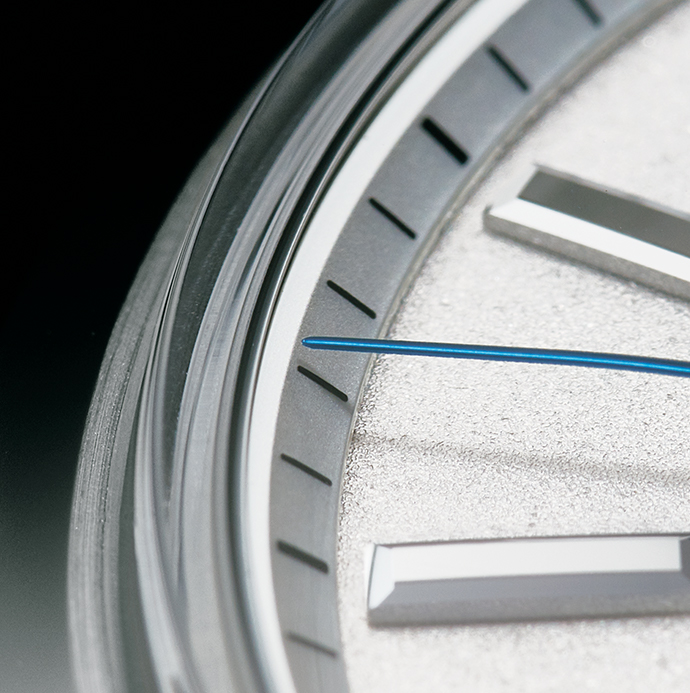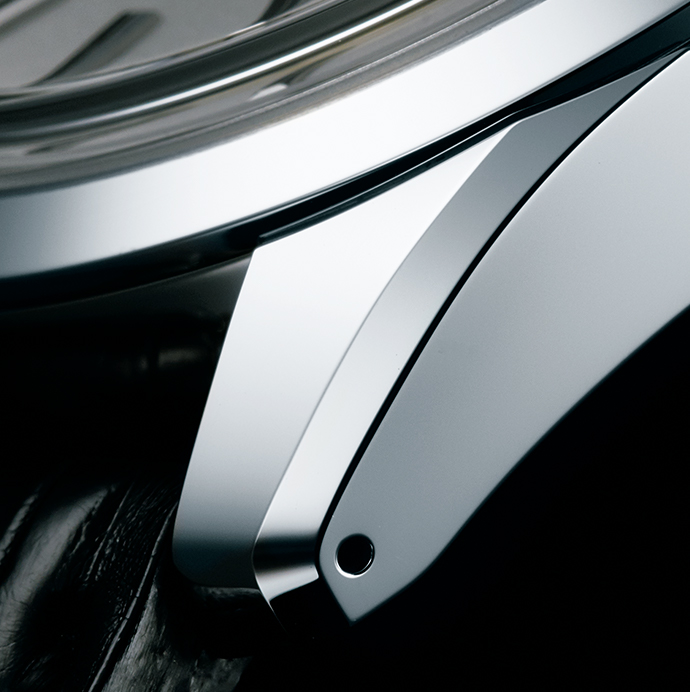Perfection Perfection in the details
The team at the Micro Artist Studio had created a new caliber that took the timekeeping of Grand Seiko to a new level. They then determined that the watch that housed it should be equally outstanding in its design and finish and in the materials used for the case.
They selected Platinum 950, but increased its density and therefore its resistance to scratches by the cold forging of the metal. The case has Grand Seiko’s trademark distortion–free surfaces thanks to Zaratsu polishing and the dial has a unique “diamond dust” texture like the snow crystals that blow in winter across the slopes of the mountains that surround the Micro Artist Studio.
The dial is wider than other Grand Seiko watches and the seconds hand is a full 16.5mm in length. Like the hour markers, the hands are polished to a razor–edge sharpness so that even the smallest ray of light creates the sparkle of quality that is another essential part of the Grand Seiko signature.
They selected Platinum 950, but increased its density and therefore its resistance to scratches by the cold forging of the metal. The case has Grand Seiko’s trademark distortion–free surfaces thanks to Zaratsu polishing and the dial has a unique “diamond dust” texture like the snow crystals that blow in winter across the slopes of the mountains that surround the Micro Artist Studio.
The dial is wider than other Grand Seiko watches and the seconds hand is a full 16.5mm in length. Like the hour markers, the hands are polished to a razor–edge sharpness so that even the smallest ray of light creates the sparkle of quality that is another essential part of the Grand Seiko signature.
Read More

The diamond-cut markers and hands sparkle even in low light situations thanks to the polishing of each edge.

The seconds hand is 16.5mm long and extends to the very edge of the dial. The high torque of Spring Drive makes this possible.

Only Zaratsu polishing makes possible the creation of such precisely shaped and distortion–free lines that converge at the tip of each lug. The time needed to achieve this is ten times longer than normally required.
